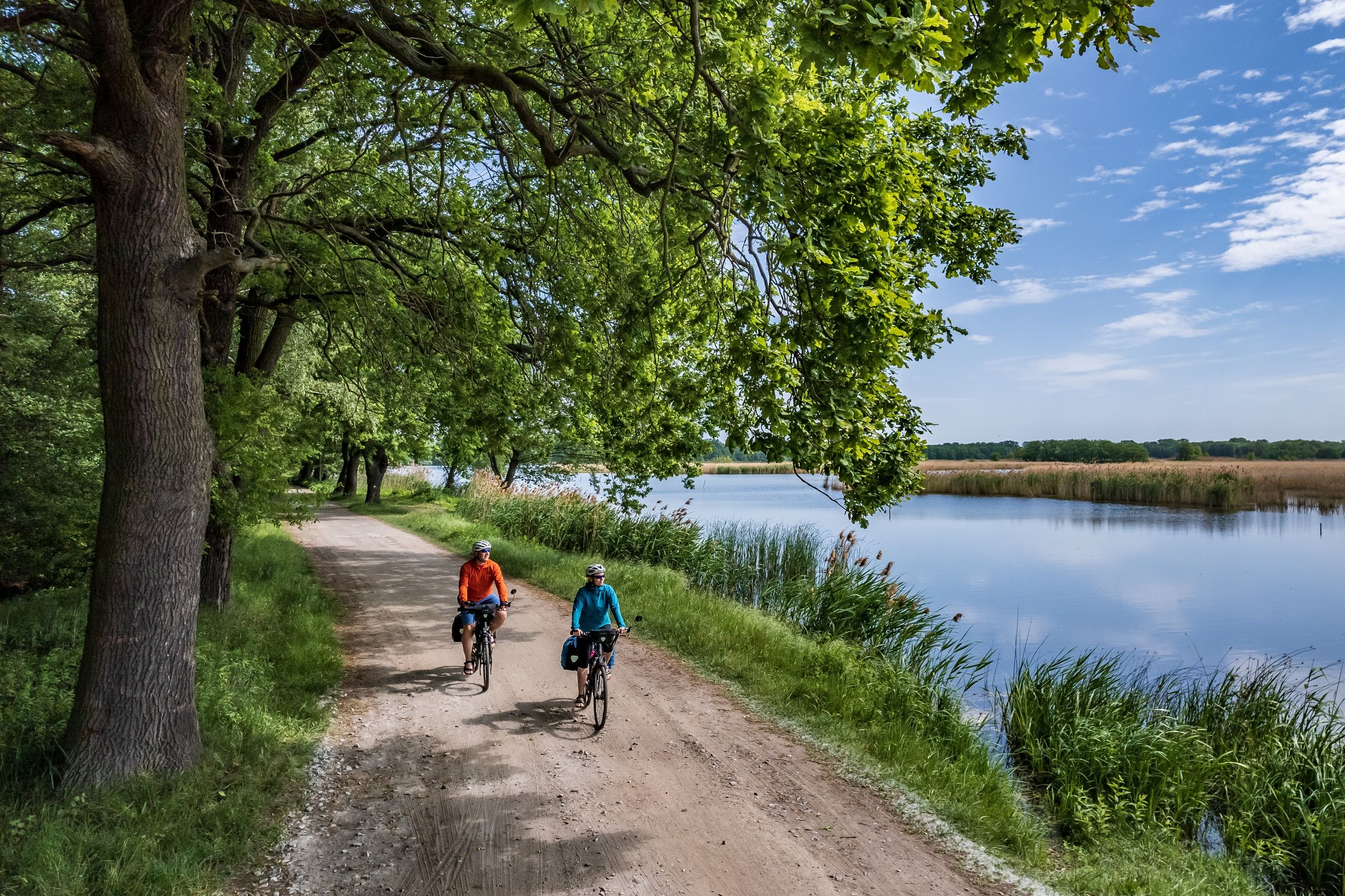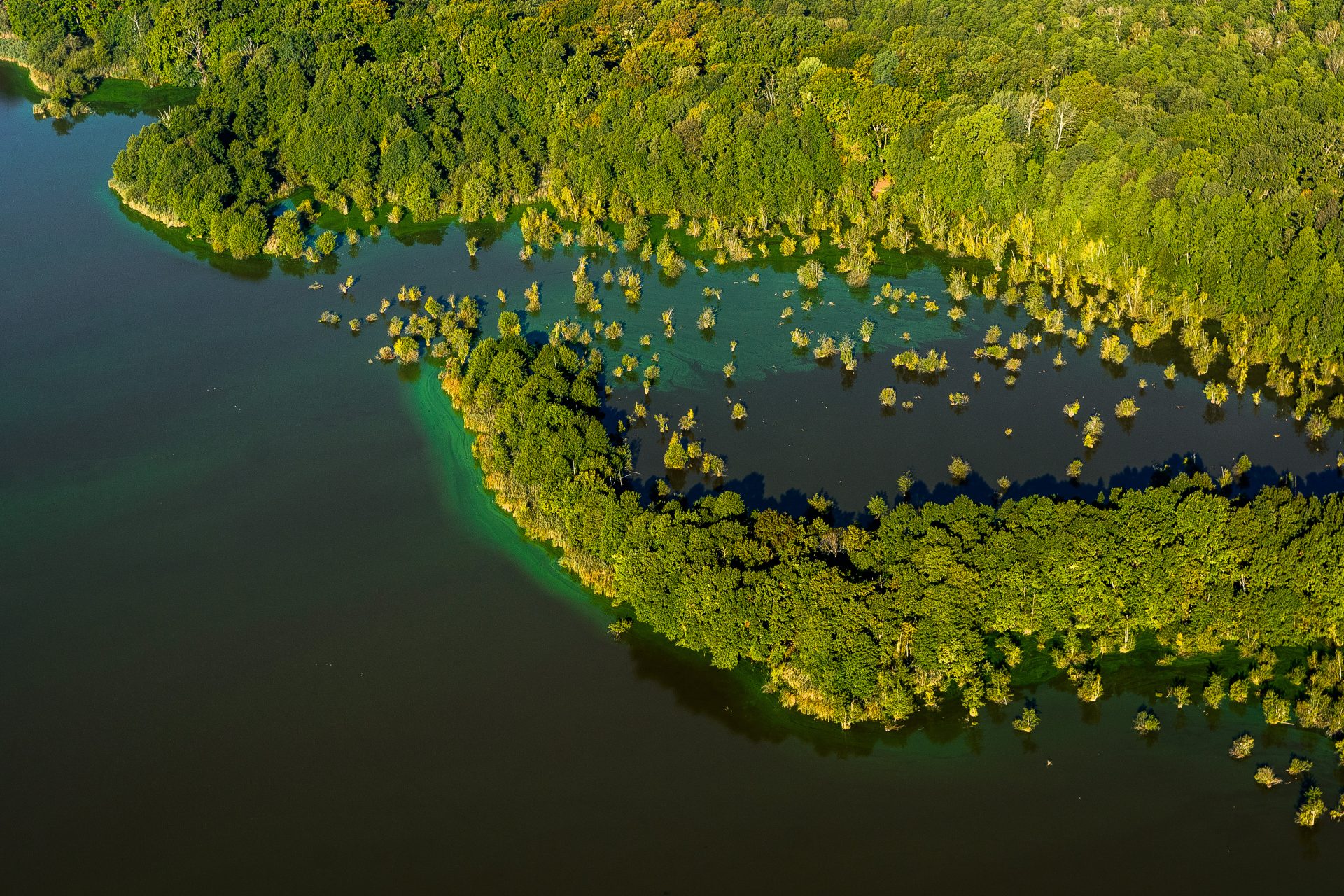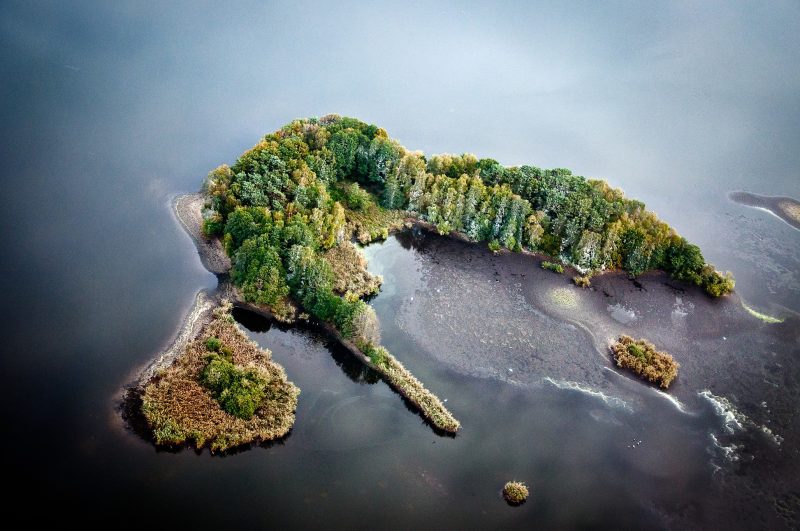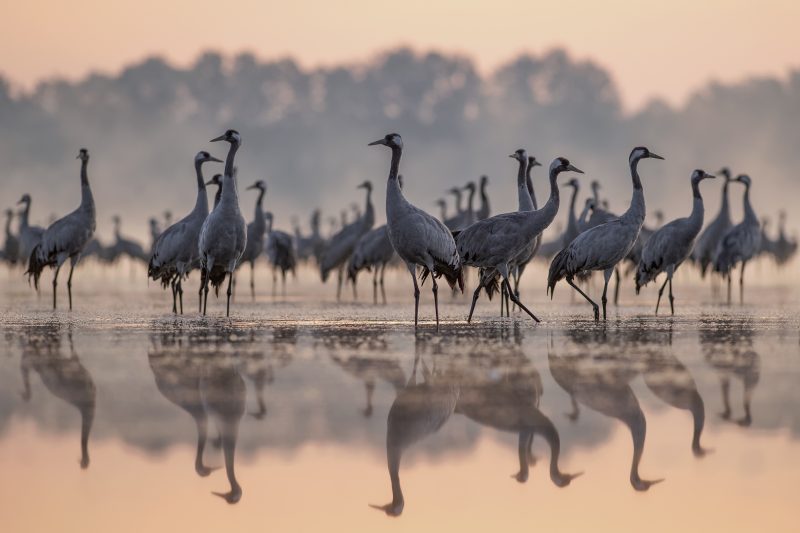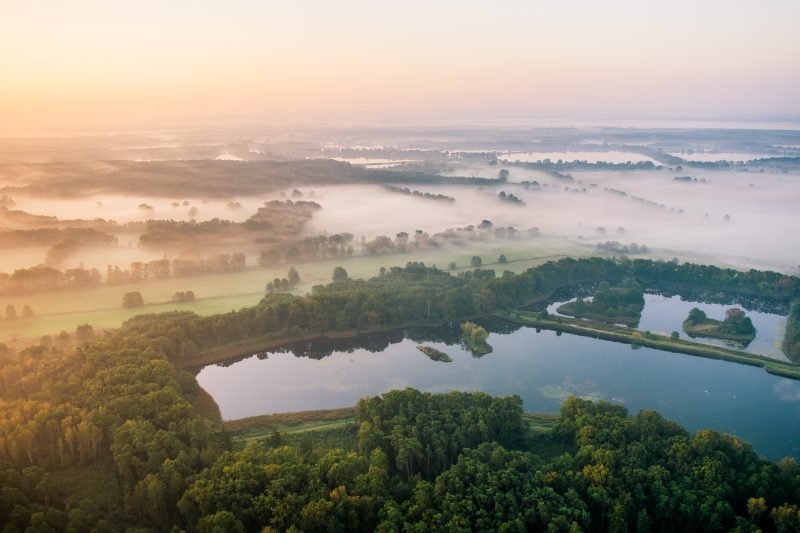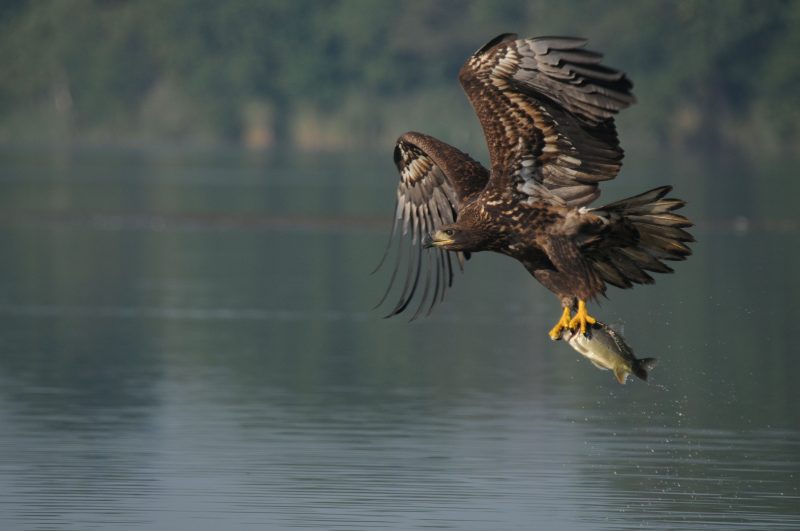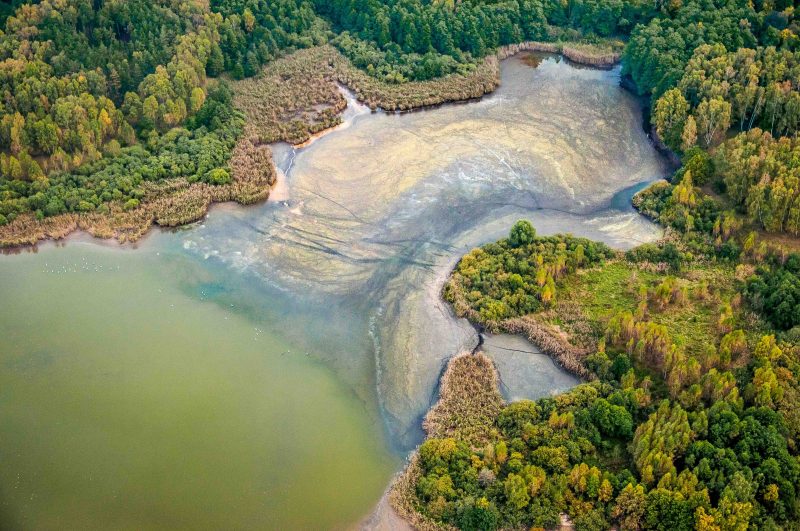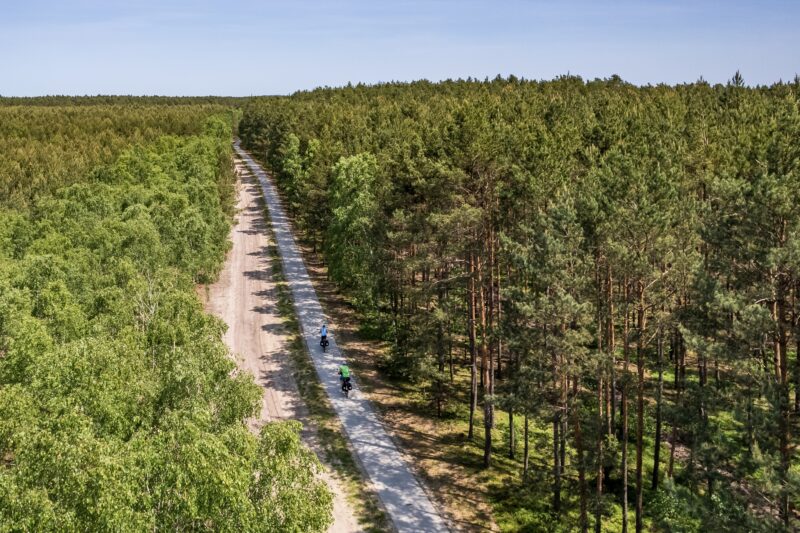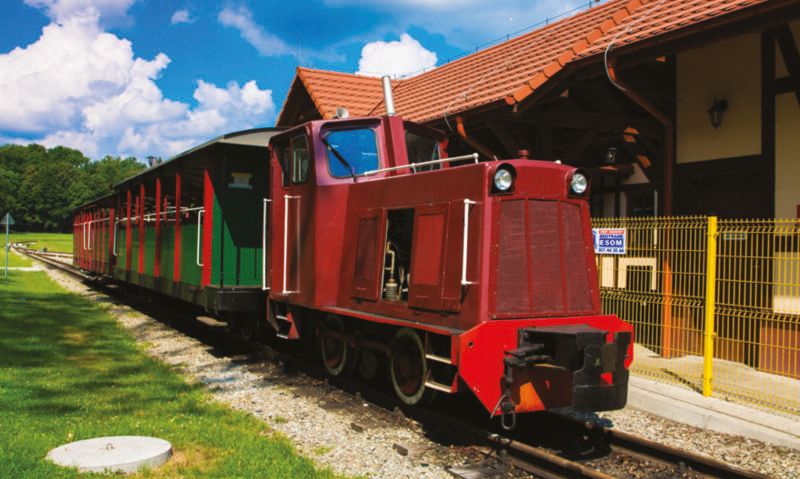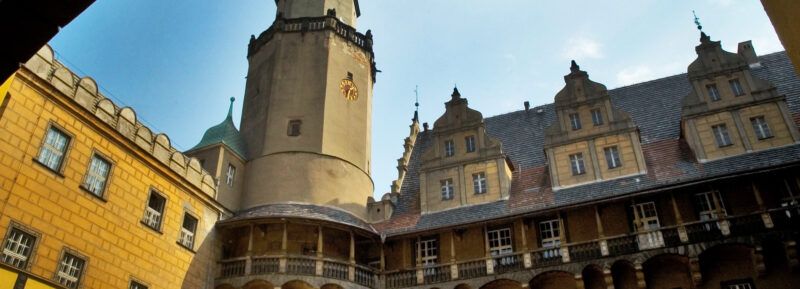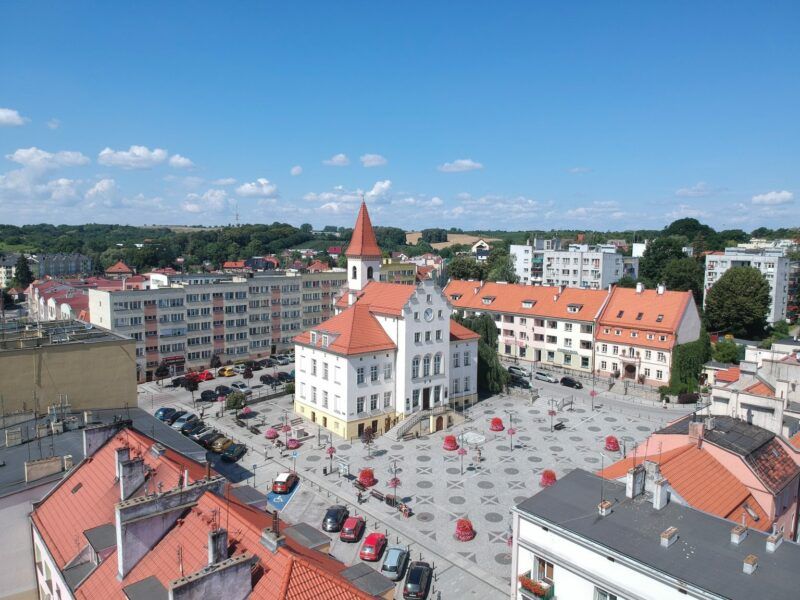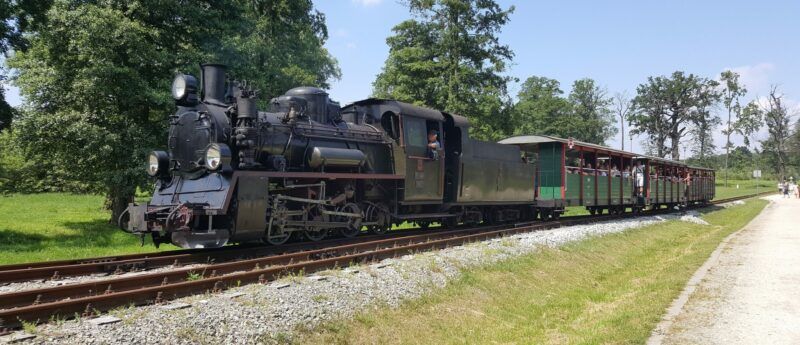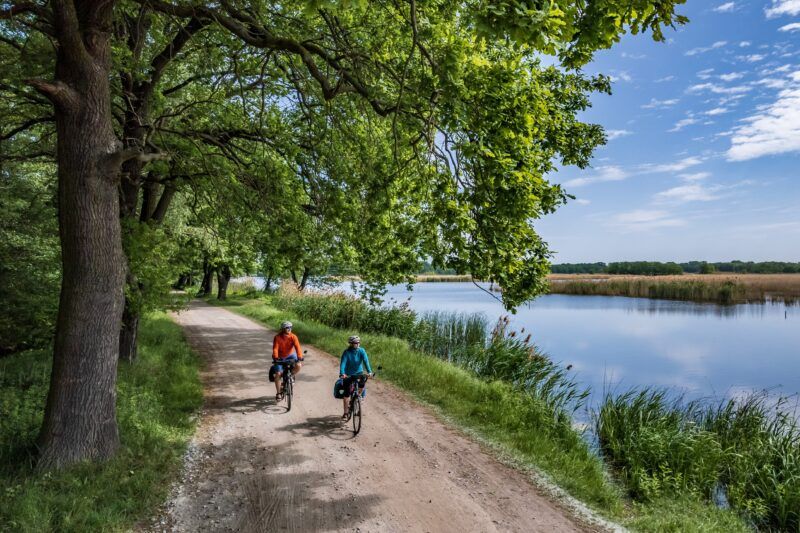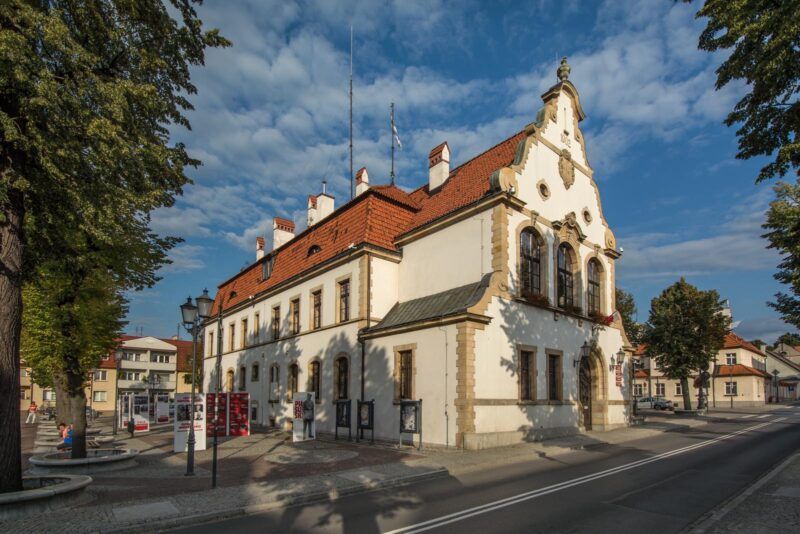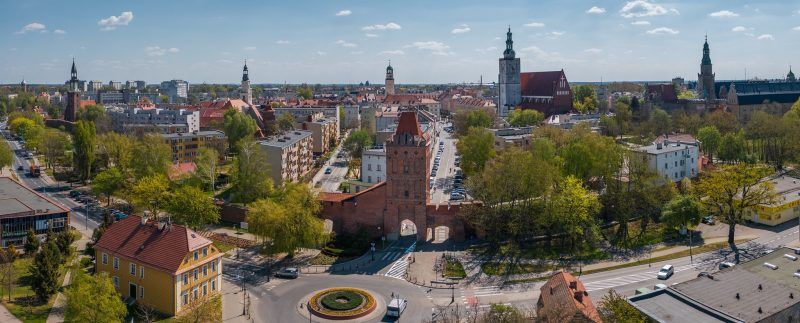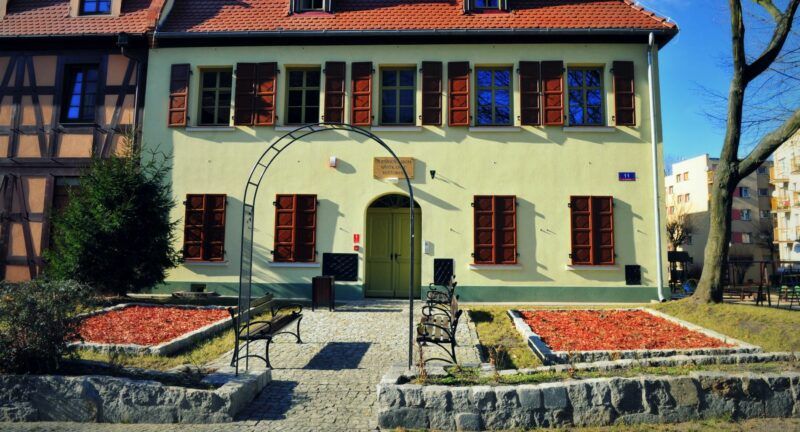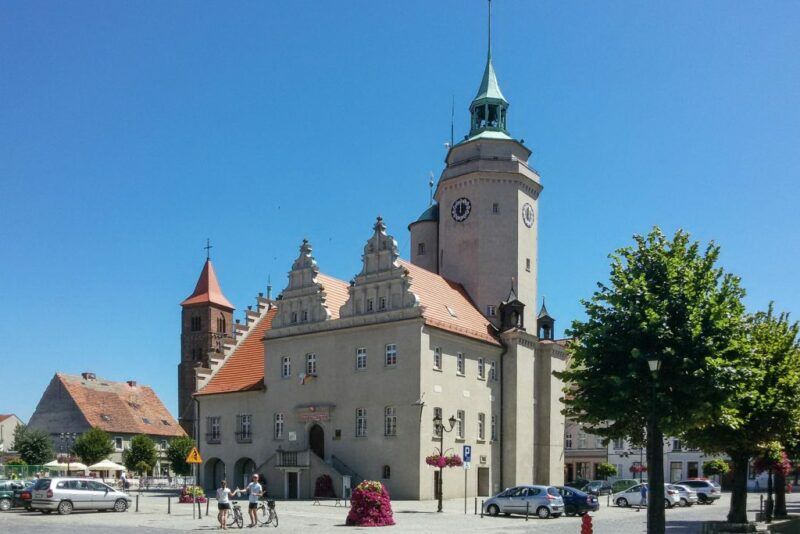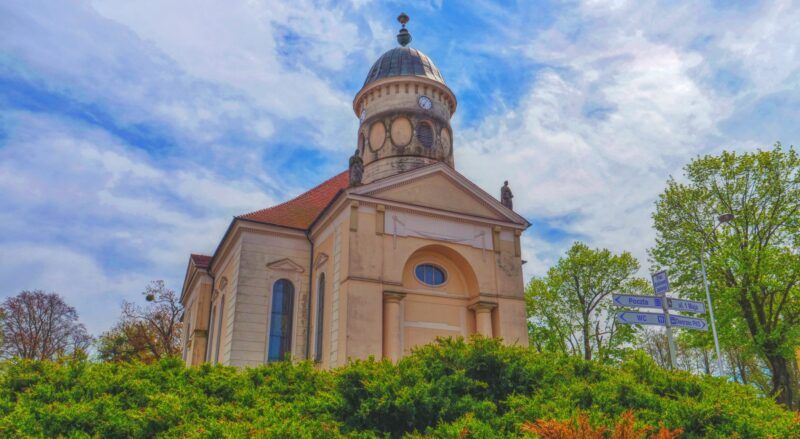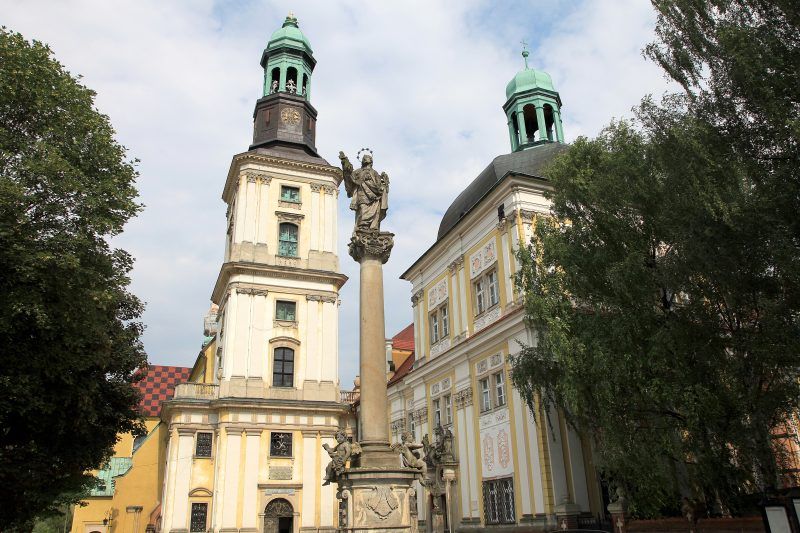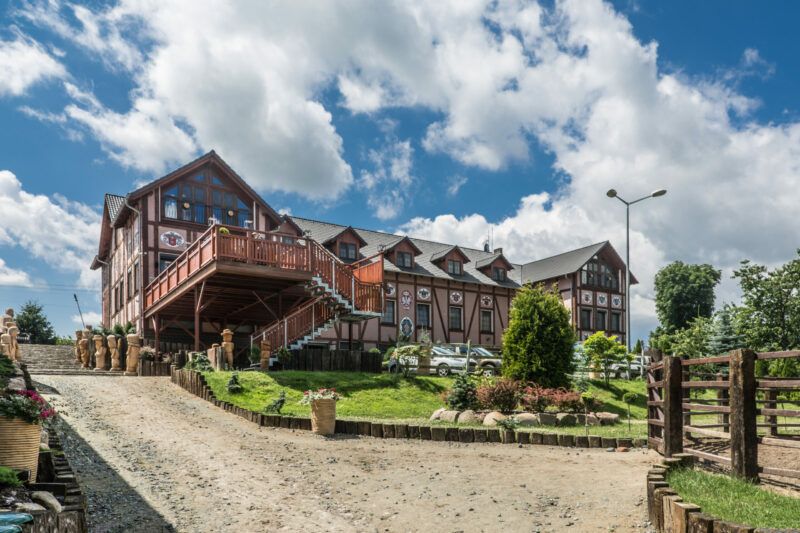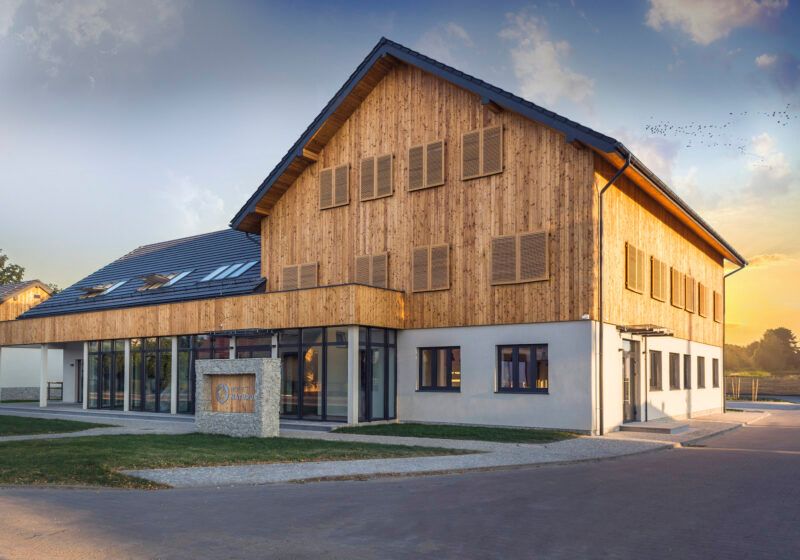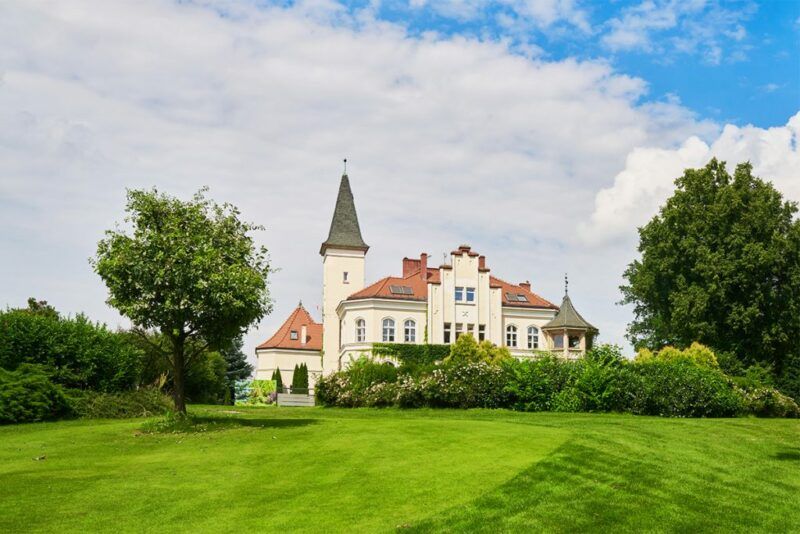The Barycz River Valley, one of the most beautiful river basins in Poland, offers wonderful landscapes and the opportunity to commune with nature without the hustle and bustle and crowds of tourists. On the Barycz River, among fields, meadows and forests, large fish ponds have been built for centuries. This unusual mosaic of environments has become a refuge for many plant and animal species. Barycz Valley is Poland’s largest ornithological reserve Stawy Milickie – a true bird paradise and an ideal place for birdwatching. It’s centuries-old oak avenues, inaccessible alders, flowery meadows and vibrant waters encourage nature-friendly tourism.
One of the greatest curiosities of the Barycz, even on a European scale, is the phenomenon of bifurcation. The waters of this river in its initial course between Ostrow and Kotlow do not have a definite direction of outflow, or they drain simultaneously in two directions – westward through Odolanów and Milicz into the Oder River (Barycz Proper) and eastward flowing into Olobok and Prosna (Barycz Lazy).
Europe’s largest complex of artificial fish ponds, the Milice Ponds, attracts birdwatching enthusiasts. And it’s hard to surprise them. At the Milice Ponds we will meet such a rare white-tailed eagle, which is the prototype of the emblem of Poland, or another impressive bird predator – the pond harrier. In addition to them, you can observe several species of herons, black stork, lapwings, corncrakes or beautifully feathered hoopoes.
The rich natural world here adjoins equally interesting but little-known cultural monuments, such as unique ore houses, half-timbered churches and historic but still operating weirs – traces of the former inhabitants of these lands.
The Trzebnica Hills are located north of Wrocław and, despite their great diversity and abundance of historical monuments, are a relatively unknown region of Lower Silesia. They are mainly visited by Wrocław residents taking short weekend trips. Many historical monuments have been preserved here, and there are also forests abundant in mushrooms and berries. The Trzebnica Hills are part of the nearly 200-kilometer-long Trzebnica Ridge, which also includes the Żarskie Hills, the Dałkowskie Hills, the Ostrzeszowskie Hills, and the Twardogórskie Hills. The highest peak of the Ridge is Kobyla Góra (284 m above sea level), while the highest peak of the Trzebnica Hills is Farna Góra (257 m above sea level), located west of Trzebnica. These areas were shaped during the Central Polish Ice Age and are remnants of sandbanks pushed by the glacier’s front. Erratic boulders brought from distant Scandinavia are common here. The most valuable monument in the Trzebnica Hills is the Sanctuary of Saint Jadwiga of Silesia, and one of the newest additions is the impressive archaeological park on Winna Góra in Trzebnica.
More information about the region: dolnoslaskakrainarowerowa.pl and dbpoleca.barycz.pl

